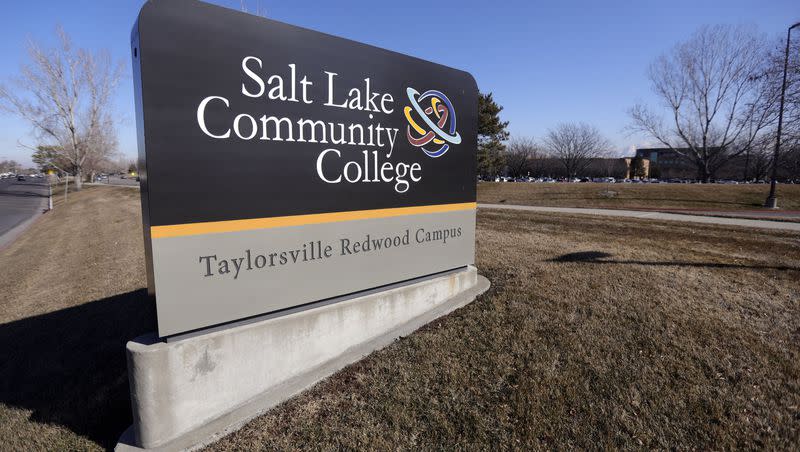Opinion: Is community college a waste? Not in Utah

Among the 3,300 students who graduated from Salt Lake Community College on May 4, 67% will continue their studies at a four-year institution. Almost half will head to the University of Utah, where SLCC’s transfer students have the same level of success as students who begin at the U as freshmen.
Synne Grubbs is one of these students. She earned her Associate of Science degree in psychology and her next step is the U of U to complete a bachelor’s degree through the university’s honors program. “I really want to help people with their struggles in life, and psychology seems like the best way to help the most people,” says Grubbs, who hopes to eventually earn a doctoral degree.
Devon Sanborn is another SLCC graduate who plans to continue her education. She earned her Associate of Applied Science in welding fabrication and inspection and is headed to Weber State University’s Manufacturing Engineering Technology program.
In a recent Associated Press article that appeared on KSL.com, the journalist writes about the frustrations of wasted time and money when two-year college credits don’t transfer to universities. The article focused primarily on the inefficiencies among the behemoth systems in California and New York (which have 116 and 30 community colleges, respectively), yet it cast a net over all community colleges.
Utah’s two-year colleges (SLCC and Snow College) should not be caught in this net. Setting up students to successfully transfer their credits is one of SLCC’s highest priorities. In fact, ensuring ease and efficiency of transfers among all of the state’s higher education institutions and technical colleges is part of the Utah System of Higher Education’s 2021 strategic plan.
Related
Opinion: This business school is the first in Utah to be named solely after a woman
Salt Lake Community College honored for use of free online resources in math curriculum
The Utah System of Higher Education has implemented a common course numbering system and policies that guide the transfer of credits between institutions and has developed an electronic Utah Transfer Guide to inform students about their transfer options. Currently, SLCC’s associate degrees satisfy all lower-division general education requirements at any public college or university in Utah. The college also employs one-on-one advising and maintains a transfer center website, where students can access information on required classes for all of Utah’s higher education institutions.
SLCC also has a team that works with other colleges on a course-to-course and program-to-program level to develop articulation agreements. If a four-year institution does not accept a course for which there is an articulation agreement, SLCC will intervene to ensure the agreement is honored. The frustration among students cited by the AP is real, and credit loss can happen in the absence of articulation agreements.
Counter to the dismal community college completion rates also cited in the AP article, Utah’s two-year colleges have higher completion rates than their national peers, according to the state’s higher education 2022 report. It’s the only sector of our USHE system that has an above average completion rate.
As Utah’s largest two-year college, our decisions are guided by our commitment to helping students find success while at SLCC and in the next stage of their education. After all, more than 85% of our students plan to stay in the area to work and raise families, and we want them to reach their full potential for themselves, for their families, and for all of Utah.
Clifton G. Sanders, who hold a doctoral degree, is the provost for academic affairs at Salt Lake Community College.

